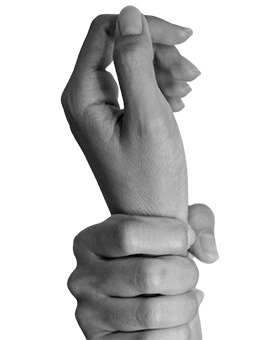Overview
De Quervain’s Tenosynovitis is a condition affecting the tendons on the thumb side of your wrist. It can be brought on by overuse or direct trauma to the area that results in swelling. It is common to see this condition bilaterally in new mothers as this position of extending the thumbs up and deviating the wrist simultaneously, as done when picking up a child under the arms, can place strain on these tendons.
Any repetitive motion such as gripping or pinching can cause inflammation of the thumb tendons and tendon sheaths, which narrows the compartment around these structures, ultimately resulting in inflammation and pain.
Symptoms
Patients with De Quervain’s Tenosynovitis will complain of pain at the base of the thumb running up into the thumb and sometimes into the forearm. This will generally be exacerbated with thumb extension and movement of the wrist sideways towards the little finger. The area over the affected tendons may also be tender to touch. Localised swelling may or may not be evident.
Treatment
Sometimes, patients report relief from conservative management involving splinting of the thumb and wrist, avoidance of any painful activity, and management of swelling.
Corticosteroid injection can also assist in the relief of symptoms, and can be done in Dr Mackay’s rooms or by a radiologist. This injection is made into the tendon sheath and can offer relief to some patients.
If the symptoms are on-going after 6 weeks of conservative treatment, surgery is the best option to cure the condition and allow a return to normal life. Surgery will decompress the dorsal compartment of the thumb tendons and allow the irritated tendons more room to move and glide.
What to Expect in Recovery
If surgery is performed early enough, recovery is fast. The longer the condition exists, the longer the recovery takes. Most patients benefit from the guidance of a therapist in the first few weeks after surgery.
